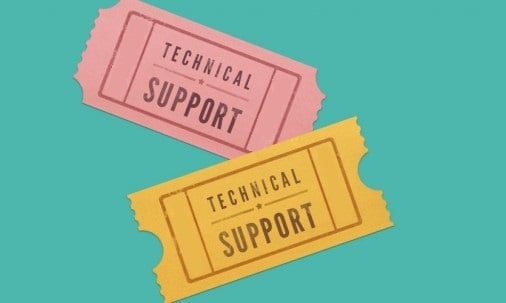
Any tasks chief in a client service focus will say that help tickets are one of the greatest expense factors that an organization should confront, as far as both volume and length. In North America, the normal expense per ticket comes to $15.56, and can even go as high as $49.69!
A high volume of tickets, by and large, demonstrates that at the core of the matter, your clients are dealing with annoying issues. Client assistance issues not settled on first cooperation have an immediate connection to bring down consumer loyalty results. Notwithstanding more tickets, disappointed clients may even impart their dissatisfactions to companions, or air their complaints about web-based media.
1. Implement Root Cause Analysis Clearly, before you can address the issues at the center of your help ticket issues, you should first plainly recognize them. To achieve this, you should take part in some type of "main driver investigation" (RCA for short) — all in all, a precise cycle for distinguishing the underlying drivers of expanded ticket volume or goal time.
Luckily, underlying driver examination doesn't need to be a confounded cycle. As a beginning stage for your examination, you can follow a basic 5-venture approach zeroed in on asking "Why?" The means are as per the following:
- Depict what occurred (the idea of the ticket, the client issue, detours to goal, and so forth)
- Ask "Why?"
- Tune in to the appropriate response given
- Ask "Why?" once more
- Rehash stages 2 through 4 until the main driver has been recognized
Main driver examination is a significant initial step since it compels you to burrow underneath the surface and decide whether a typical issue is really a simple manifestation of a lot further issue.
2. Create Customer Profiles and Analyze Them for Common Needs
Another progression that will assist you with narrowing down your center is the aggregation and examination of client profiles. Consider it thusly: if your help group is overwhelmed with specialized help demands from more seasoned individuals, throughout each and every day, at that point you ought to dissect normal issues that more established clients encounter and focus on the decrease of those issues, rather than challenges that more youthful clients may confront.
How might you effectively make client profiles to help your endeavors? There are a few courses you can take, for example.
Ordering your clients by explicit attributes (age, area, sex, schooling, and so on)
Sorting clients buy the item they use
Separating clients into two essential gatherings: the ones that are probably going to have their ticket settled the first run through, and those that are not
Whenever you have separated your clients into significant sections, you'll have the option to examine the most ordinarily happening issues that your representatives are managing and have a superior comprehension of which client needs to focus on for the principal call goal.
3. Focus on “Quick Hits"
After you've played out your underlying driver investigation and sectioned your clients, one of the easiest and most practical strategies you can send is to zero in your healing endeavors on "fast hits" — that is, cycle or foundation upgrades that don't need a great deal of time or speculation, yet offer huge ticket decrease benefits.
As only one model, assume that a huge level of clients calls into the assistance work area for help with resetting their secret phrase. On the off chance that that is the situation, could you set up a site or a page committed to computerized secret key resets? Such a page probably would not need an enormous use of assets however would incredibly lessen the number of inbound help calls to your middle.
4. Educate Support Agents How to Resolve Issues with First Customer Contact
At last, individuals who work for your organization are your most significant asset. When you've obviously distinguished some root issues that lead to rehash calls or pointless tedious help tickets, you should start a preparation program to assist your representatives with seeing how to manage and take out the wellspring of an issue on the primary connection with a client.
Quite a while back, an organization called Bell Canada met this test. Business pioneers took data around "occasion bunches," and prepared agents to determine the guest's essential worry as well as to expect and address "downstream issues." For example, clients that would arrange a specific item or highlight would regularly get back to ask use-related inquiries. By giving a speedy instructional exercise to that subset of clients prior to disengaging the call, specialists had the option to diminish "calls per occasion" by 16%, and client stir by 6%.
5. Invest in Advanced Support Center Software
At long last, you can take out a great deal of the grinding from specialist client communications by putting resources into creative CRM programming. Such programming will probably incorporate the accompanying highlights:
-> A data set of client history, containing point by point data on past cooperations, client socioeconomics, and past exchanges
-> Abilities based directing capacities, so the guest will be moved to a specialist with the abilities that best line up with their issue (e.g., office, required specialized information, language spoken, geographic area, and so on)
-> An arrangement of measurements to assist directors with recognizing performing specialists, whom they could then "up-expertise" to deal with a more extensive assortment of help tickets, just as specialists that need extra instructing for their present job

Comments